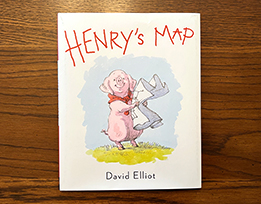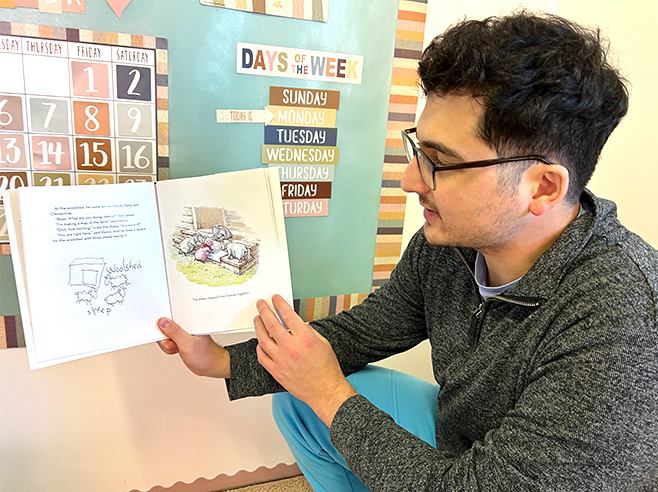Children listen to the story of Henry, who makes his own map.
Materials

- Henry’s Map by David Eliot
Preparation
- Pre-read: Read through the story on your own before reading with children.
Directions
- Before You Read: Hold up the book and read the title and author. Ask children what they think the book will be about. What do they think Henry is holding?
- Ask children to describe what a map is. In this book, they’ll see a map of a farm with landmarks. Ask children to explain what a landmark is.
- Ask if they remember any other maps of farms they’ve seen (e.g., the map in Piggies in the Pumpkin Patch and the Farm Map in the Different Kinds of Maps activity).
- As You Read: Pause each time you see one of the landmark drawings Henry adds to his map.
- Have children compare Henry’s map drawing (left-hand page) to the picture of the farm (right-hand page). For example, when Henry draws the woolshed with the three sheep beside it, have a volunteer point out the woolshed in the picture on the right-hand page and count up how many sheep are in the picture: Ask: Are the same number of sheep in the picture as on the map?
- When you come to the two-page spread of Henry’s hand-drawn map in the middle of the book: Review what’s on the map, calling on children to name each landmark and what animal(s) live there.
- After you read: Ask children what happened at the end of the story when the animals were up on the hill and looked down at the farm. They noticed that Henry’s map looked different from the farm. Ask: What is different?
